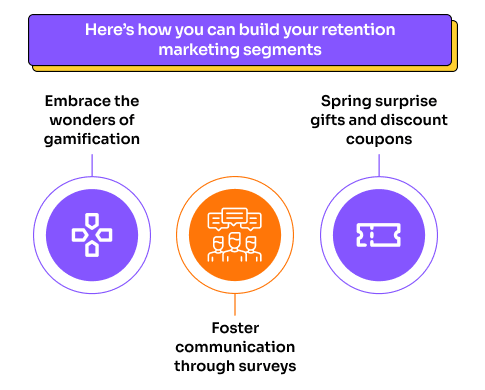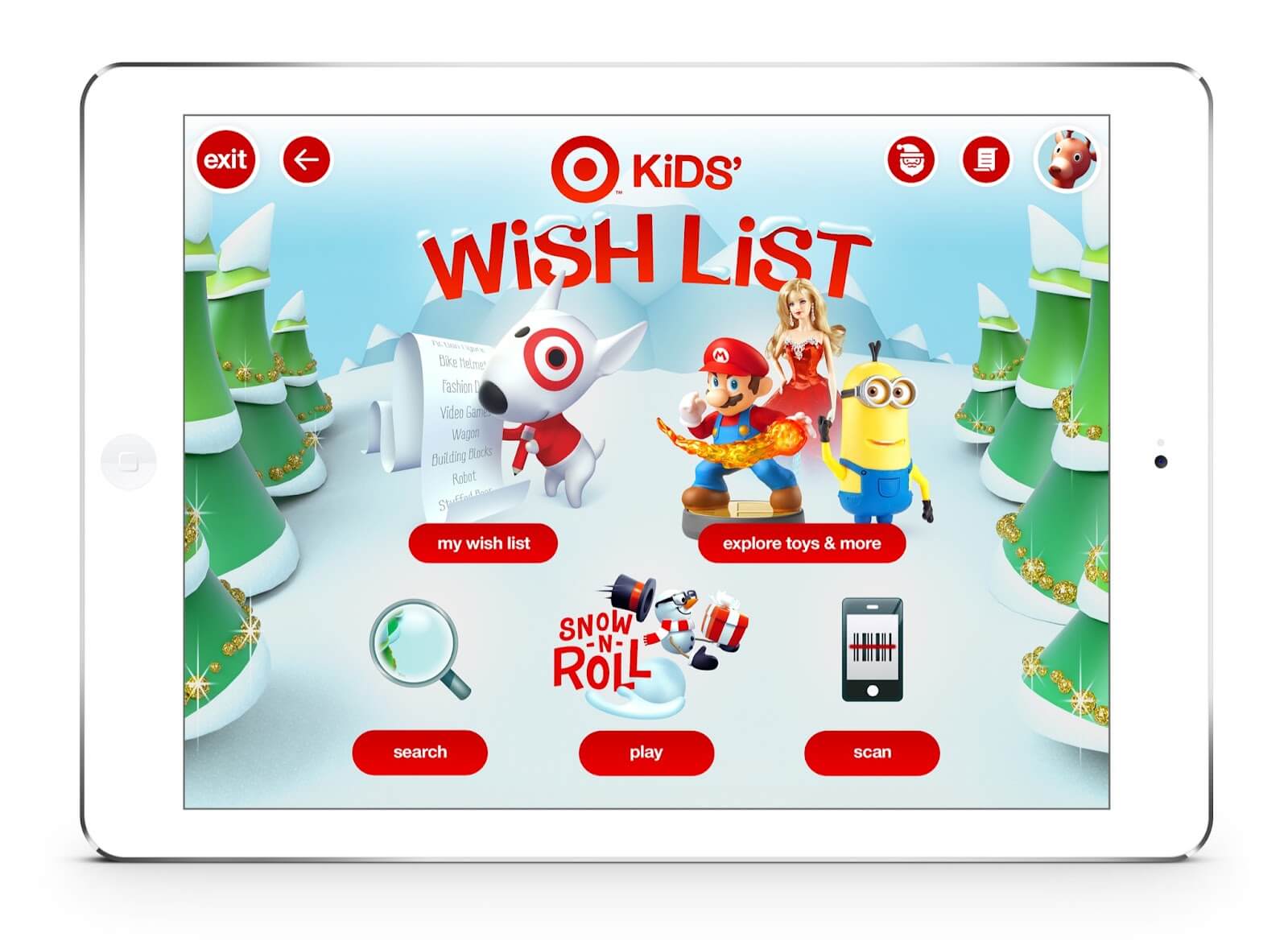A HubSpot survey notes that 90% of customers are likely to purchase more than once from you. With such powerful odds, it is prudent to divert some of your marketing spends to turn first-time customers into repeat purchasers. In this blog post, we elaborate on three outcome-oriented ways to build your retention marketing segments.
Customer retention requires strategies that might not work for customer acquisition. For the latter, you need to build trust first. Once a customer has purchased from you and had a seamless experience, you can use interesting ways to keep them returning. But to do that, you need a robust customer database.
Here’s how you can build your retention marketing segments:

1) Embrace the wonders of gamification
Introducinggaming mechanics and the concepts of winning in addition to your conventional sales strategies can generate a feeling of excitement amongst your customers.
You provide your customer with an experience akin to a video game or arcade game, thus also giving them a sense of nostalgia. By gamifying the shopping experience, you are doing more than just selling a product; you are selling an experience.
Introduce progress bars to indicate how close they are to their next discount or encourage them to post on social media to gain points that can be encashed for a surprise gift. You can also insert spinning wheels, scratch cards, and other classic gaming strategies to make the discount process fun.
Encapsulate gamification in the marketing copy as well. Crafting subject lines that present a challenge to the customer to try a particular game and using vocabulary like “winning,” “progress,” “levels,” and so on will contribute to your shoppers’ excitement and anticipation.
By converting actions such as making orders, giving referrals, and sharing on social media into games or quests, you motivate customers to follow through because who doesn’t want to win, right?
Depending on your brand voice, you can run campaigns that make the customer reminisce about a carnival, an old computer game they used to play, or a new trending game.
A great example of gamification is Target’s “Holiday Wish” app. Target transformed to Santa’s helper for the holiday season. The 3D animated game experience encouraged children to create personalized wish lists and send them to Santa. Target generated a staggering 75,000 downloads of the app in a single holiday season. Customers also created 100,000 wish lists and 9,200 new Target.com accounts. A win-win for all!

2) Spring surprise gifts and discount coupons
Discount offers are the oldest trick in the book, but jazzing it up with a surprise element can make your customer feel appreciated. What’s more, they will share their email with you to get in on the surprise gift and just like that, you have new additions to your retention marketing segments.
While you can reflect the discount on the product page, applying it on the check-out page where the customer doesn’t expect it will generate more excitement. This is an emotion they will remember when they consider a second purchase.
Another method of surprising them is sending free samples or gifts like customized Photo Tiles without mentioning them in the order details, creating an unforgettable customer experience. You can also send them a gift voucher on their birthday or other important dates.
It is not just the product or the marked-down price that will bring them back, but the unexpected positive experience you have delivered. Depending on your niche, you can also offer freebies beyond your product lines, such as movie tickets, books, or subscriptions.
Once sufficient data reveals their purchase patterns, you can continue springing discounts or gifts relevant to them. This level of hyper-personalization coupled with the surprise factor will encourage them to buy from you again.
To further nudge your customers to repurchase, you can also include a degree of exclusivity in your gifts and discounts. Offering these as part of a VIP program or a “first-time buyer” program to show that you appreciate their business and they are part of a “special club” will generate a genuine connection and assist in customer retention.
67% of customers love receiving surprise gifts as part of loyalty programs and often consider it a defining factor that influences their continued interest in the brand. Don’t disappoint this sizable share of your customers.
3) Foster communication through customer surveys
Effective customer surveys have three benefits:
- Helping customers feel that their opinion matters and they are being heard;
- Identifying dissatisfied customers and tweaking your retargeting campaigns for them;
- Measuring overall customer satisfaction.
It also helps in engaging your customer with your brand enough that they share their emails with you that you can use to strengthen your retention marketing segments further.
However, all surveys are not great surveys. The timing of these surveys is crucial and can make or break the response you get from your shoppers.
One kind of surveying focuses on immediate feedback about a specific order. Send this survey immediately after the order has been placed and once again after successful delivery. The shopper will get to comment on both stages of the purchase journey and will feel heard.
Another set of surveys can be for periodic check-ins. Identify customers who never purchased from you a second time. Send them a survey and other benefits such as discounts and sales announcements. Remind them of the order they had placed and allow them to recall their experience.
You can also send these surveys to customers who haven’t purchased in a while to gauge whether they have left for good due to some dissatisfaction or are just not interested in buying right now for other reasons. Depending on their answer, you can offer your shoppers fresh incentives to purchase from you again.
But remember not to overwhelm your customers with too many or too long surveys. Include a combination of rating metrics and short responses, both of which can be used as a foundation for product/marketing decisions. You can also ask them how you compare against your competitor’s products if you have observed that some of your customers have switched.
Each of these surveys will contribute to customer retention by helping you identify and leverage the positives and recognize areas that need improvement.
Jaypore, an ethnic fashion marketplace, does customer surveys for disengaged users. Survey questions range from customer profiles to feedback on every step of Jaypore’s buying experience and customer service. What’s more, they attach a discount voucher to the survey to entice customers to respond to the questionnaire and also, shop from them soon. Here is an example of their customer survey SMS.

Customer retention is not hard
But building robust retention marketing segments can be. With the above strategies, you can engage your shoppers and keep them coming back for more. And soon, you will have a new tool to help you build some of the most substantial retention marketing segments in the industry.
You may also like
Essential resources for your success
















